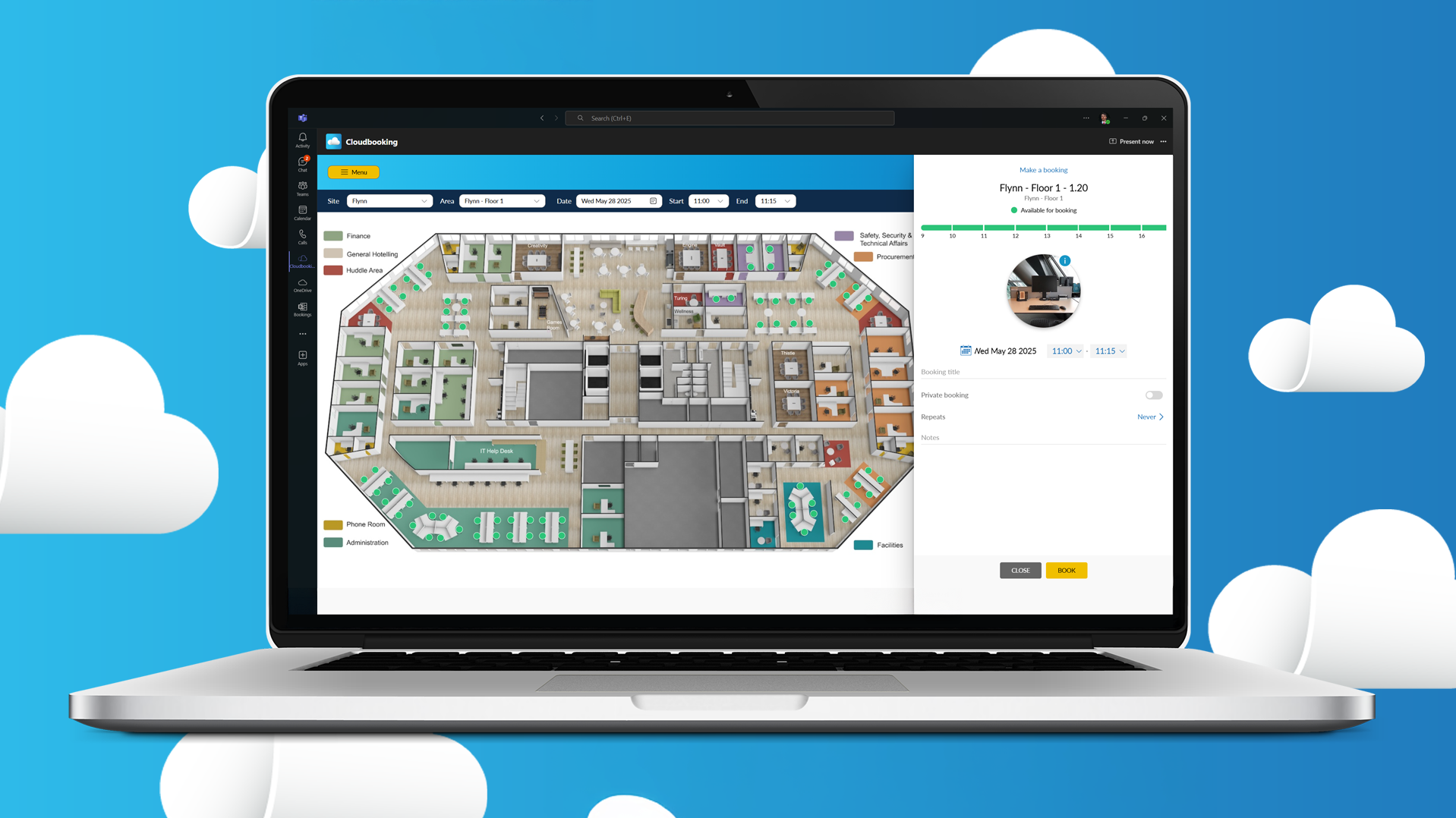
Adapting to the New Normal
When the Covid-19 pandemic arrived, businesses across the globe shut their office doors, sending employees home with laptops and a great deal of uncertainty. Remote working, once considered an occasional perk, suddenly became the backbone of daily operations. Tools like Zoom, Microsoft Teams, and Slack became lifelines, allowing teams to stay connected and businesses to keep running.
Initially, it was all about survival. IT teams scrambled to equip workers with the tools they needed while employers worried about productivity. But then, something surprising happened. Productivity didn’t just hold steady; it soared. By the end of 2020, productivity actually increased by 47%, despite employees juggling homeschooling, cramped workspaces, and the stress of a global crisis.
This unexpected success sparked a workplace revolution and laid the groundwork for the hybrid working model we know today. So, let’s dive into what happened, where we are now and what lies ahead for the future of work…
2021: Redefining How We Work
By 2021, businesses faced a critical question: how do we bring employees back to work without losing the flexibility they had grown to value? For many, the answer was hybrid working. A staggering 89% of companies planned to adopt hybrid models, while only 11% expected employees to return to the office full-time. The traditional 9-to-5 office routine was no longer a given.
This shift wasn’t just about where people worked; it redefined how they worked. Progressive policies like core working hours and four-day work weeks gained traction, with 92% of organisations exploring these ideas. Flexibility was no longer a luxury. It had become an expectation.
Recruitment strategies also adapted. With less reliance on office-based roles, 32% of businesses began hiring based on skills rather than location, opening the door to wider and more diverse talent pools. Hybrid working wasn’t just about culture, it made financial sense too. 62% of business leaders reported that hybrid models boosted profitability, alongside various studies that indicated previously unimaginable cost savings were accessible through, you guessed it, hybrid working.
But it wasn’t all smooth sailing. Keeping morale high proved to be a stark challenge in 2021 as Covid-19 continued to ravage the world. In response, leaders focused on initiatives like virtual events, better home-office setups, and regular check-ins to support employees. Offices also retained a role in this new world, with 63% of leaders planning to maintain their existing spaces, recognising the value of in-person collaboration. This importance on in-person collaboration was truly birthed in 2021 and would continue to grow as a talking point, later becoming a challenge to the idea of flexible working.
Ultimately, 2021 was a year of trial and error. It set the stage for a more adaptive and inclusive approach to work, but it was ultimately clear that those embracing hybrid work in the right way were adapting faster to market changes and being overall more effective.
Related Reading: Cloudbooking Introduces New Workplace Solution Bundles for Micro and Small-Sized Businesses
2022: Flexibility and Non-Negotiables
In 2022, hybrid working had moved from experimentation to expectation. Flexibility was no longer up for debate. 66% of workers said they would immediately look for a new job if their ability to work from home was removed, with some stating they would simply quit outright.
The year also saw unprecedented job mobility with over 45% of workers believing it was a good time to find a new job. Almost 29% of employees switched jobs and another 9% actively searched for new opportunities. For organisations, offering hybrid working was now critical for attracting and retaining top talent, especially now over 76% of employees made clear they would prefer to work for a company that offers flexibility over one that doesn’t.
Despite its popularity, hybrid working brought challenges. 62% of workers said they felt more productive at home, but 45% reported an increase in work-related stress compared to the previous year. However, The International Labour Organization found that flexible work arrangements significantly reduced stress when implemented correctly, but many organisations struggled to strike the right balance between autonomy and structure.
The balance between flexibility and structure became the central focus of 2022. Covid-19 was becoming a distant memory to many and organisations were actively trying to understand their workplace future. However, employees were beginning to make it clear as to their expectations on flexible work.
2023: Meeting Expectations, Navigating Tensions
By 2023, hybrid working was firmly established, but cracks in the system began to show and office mandates began to appear. While 66% of workers believed working from home should be a legal right, many felt their employers weren’t fully embracing the flexibility they craved. Over half (54%) said they believed office mandates were driven more by traditional expectations than genuine business needs, with the importance of in-person collaboration being the key message delivered by organisations during this period.
The gap between what employees wanted and what organisations provided was glaring. While 54% of workers were still in the office full-time, only 19% wanted to be there. Hybrid employees struck their own balance, with most going into the office two to three days a week.
In 2023, job mobility remained high, driven largely by growing resistance to return-to-office demands. That year, 17% of employees chose to switch companies, with flexibility emerging as a critical deciding factor. A striking 40% of workers stated they would reject a job offer that didn’t provide flexible hours. For hybrid employees, the stakes were even clearer: while 35% said they would comply with full-time office requirements, they would immediately begin searching for a new role. Meanwhile, 6% of workers indicated they would quit outright rather than return to a rigid office schedule.
Culturally, the hybrid model continued to reshape norms. The newfound flexibility allowed by hybrid working led to a rise in side hustles, with 30% of employees taking on additional jobs alongside their primary roles. This cultural shift also extended to workplace preferences, as 50% of employees expressed a willingness to accept a pay cut of 5% or more in exchange for greater freedom in workplace attire. However, the benefits of flexibility came with challenges, as 40% of workers continued to report an increase in work-related stress compared to the previous year.
By 2023, the tension between employees and employers had reached a critical point. While hybrid work continued to gain traction, organisational resistance became increasingly evident, with a growing push for return-to-office mandates. This clash highlighted a widening disconnect between employee preferences for flexibility and traditional workplace expectations, signalling that the future of work remained a contested space.
Related Reading: How to Optimise Your Workspace with These 8 Occupancy Metrics
2024: The End of One-Size-Fits-All Work
By 2024, hybrid working had become the dominant model for UK employees. According to Owl Labs, 51% of organisations now adopted hybrid schedules, whilst The Flex Index suggested that only 28% of UK employers demanded full-time office work. Despite this clear preference for flexibility, the hybrid work debate was far from settled, as major global brands issued full return-to-office (RTO) mandates. Companies like PwC and Salesforce were among those pushing for stricter in-office attendance, but these moves were met with increasing scepticism from employees.
The 2024 IC Index painted a troubling picture of how RTO mandates have been communicated. More than a quarter of respondents reported that their employer had enforced mandatory in-office days over the past year, but almost 70% believed their employer lied about the reasons for these policies. While 45% of organisations cited “enabling collaboration between colleagues” as the primary rationale for RTO, only 20% of employees believed this was the real motivation. Instead, 29% thought the mandates were driven by a desire for greater management oversight of working hours.
This growing distrust pointed to a deeper challenge for executive teams. Failing to foster a high-trust operating environment risked undermining morale and creating rifts between leadership and employees. Despite the push for RTO, employees made their preferences clear. Flexibility was no longer a perk but a necessity.
Despite these tensions, hybrid working continued to evolve and employees continued to resist the office. Trends like “coffee badging”, where employees spent a few hours in the office before finishing their day remotely, became mainstream with nearly 39% of employees admitting to this practice. Surprisingly, 54% of employers didn’t object, signalling a growing acceptance of results-based work cultures.
Meanwhile, the UK Labour Government’s pledges to introduce the “right to switch off” and a four-day work week further solidified hybrid work’s place as the preferred model for many. A claim only made further clear by 73% of workers saying they’d sacrifice part of their salary for a four-day work week, while 76% were willing to do so for flexible hours.
For organisations, in 2024, the message could not have been anymore clear. Attempts to resist hybrid working or enforce outdated RTO mandates risked alienating employees and would be actively pushed back by employees. While the debate might continue in boardrooms, the workforce had already spoken. Hybrid working is here to stay.
The Road Ahead: What’s Next for Hybrid Working?
The hybrid work revolution is far from over. Sustainability is becoming a greater focus, with organisations like PwC exploring how flexible models can align with their environmental goals. Meanwhile, advancements in artificial intelligence and virtual reality are set to transform how teams collaborate, making remote work even more seamless.
Customisation is also gaining ground. As hybrid strategies evolve, businesses are finding new ways to tailor workplace solutions to their teams. One trend emerging from this shift is the use of flexible day allocations, allowing organisations to adapt their office spaces to meet the changing needs of different departments. By creating a balance between structure and flexibility, this approach helps teams stay connected while making better use of resources (this is Cloudbooking’s latest feature release following strong client request).
From its early days as a survival strategy to its dominant position today, hybrid working has transformed the professional world. It’s not just about where people work; it’s about how they work. Flexibility, autonomy, and balance aren’t just good for employees. They are good for business.
If you’re ready to make hybrid work for your organisation, tools like Cloudbooking can help you navigate the challenges and unlock its full potential. Whether it’s streamlining desk bookings or creating seamless meeting experiences, our solutions, are designed to give you the flexibility and efficiency to make hybrid work truly work.
Struggling to navigate the many different workplace policies and strategies of 2025? Chat with a Cloudbooking Consultant today and uncover smarter, simpler ways to manage your workspace. Let’s turn your workplace into the ultimate productivity hub!


